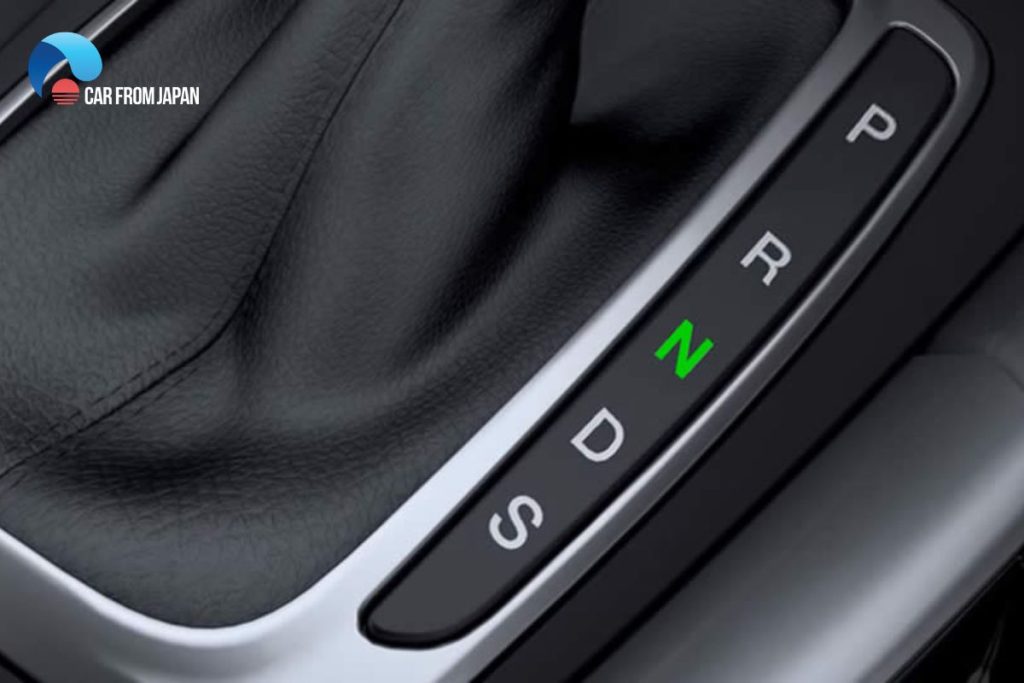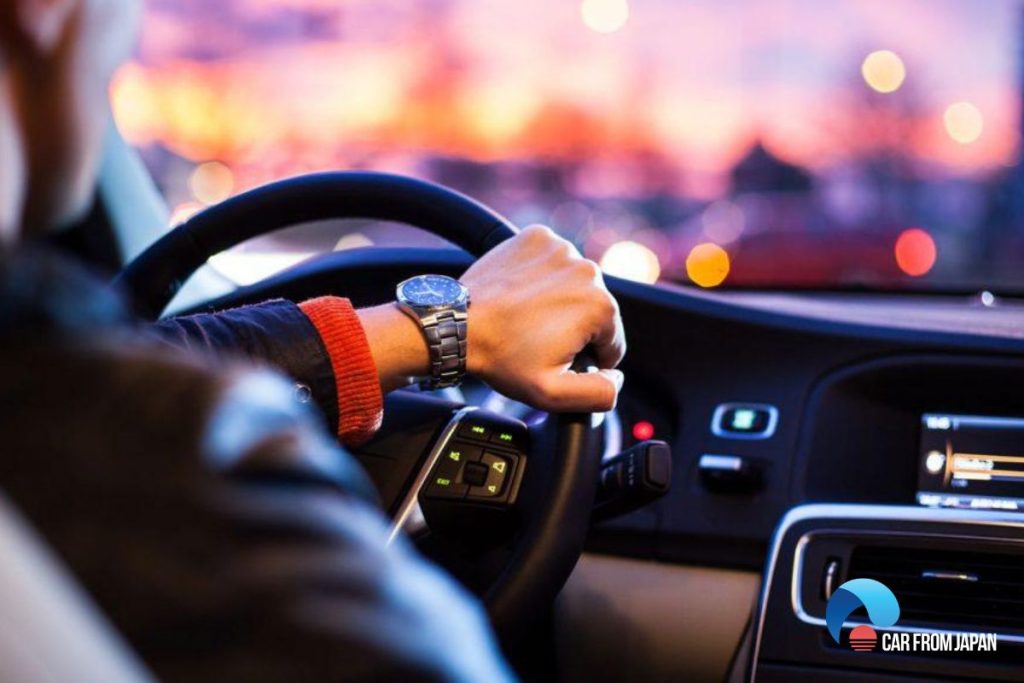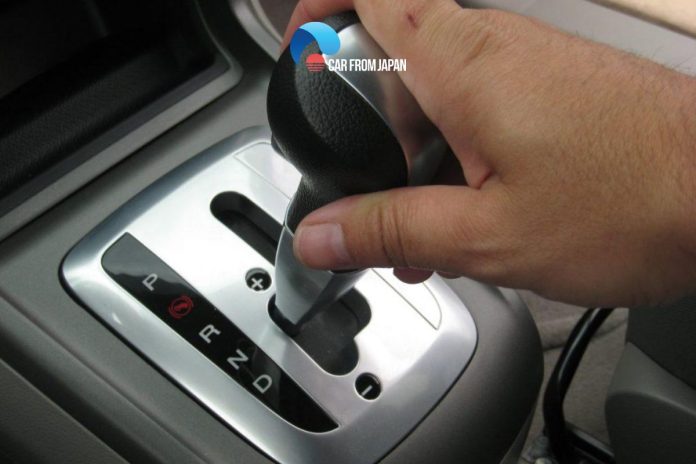‘N’ or ‘Neutral’ is a gear in cars with an automatic gearbox? Have you ever thought about the functions of this neutral gear?
Most people have never had a reason to use it, while some drivers don’t even know when and how to use neutral gear in automatic transmission.
Well, it has some unique functions and can even save your life in critical conditions.
Contents
- What Does Neutral Do In A Car?
- When to Use the Neutral Gear In Automatic Transmission
- FAQs about Car Gear Neutral
- Is there any disadvantage when using the neutral gear?
- Does putting your car in neutral save you gas?
- Is driving in neutral dangerous?
- Is it OK to put an automatic car in neutral while driving?
- Should you shift your automatic car into neutral at a red light?
- Should I put the car in neutral before parking?
- Why should you avoid coasting when in neutral gear?
- Conclusion
What Does Neutral Do In A Car?
So, first things first, let’s find out the use of neutral gear in automatic car? Shifting to neutral gear in an automatic transmission will cut off the connection between the engine and the wheels. So, no power will be transmitted to the wheels when you press the pedal.
This allows the wheels to rotate freely without drawing much action from the engine, but you will still have some control over the car.
Shifting to neutral does not do much harm except for putting a bit of strain on the brakes when you intend to stop the vehicle. However, doing it frequently for a long time could damage the torque converter.
When to Use the Neutral Gear In Automatic Transmission
There are several occasions when selecting this gear will come in handy. Let’s take a look:

Stop a car with a stuck throttle
Think of cruising down the highway at a great speed and suddenly discovering that you have a stuck throttle! Scary, right? Pushing the brake might not be enough to stop the vehicle since the speed is high.
In that case, the safe bet is to move the gear to Neutral and use the brake to park safely. Switching off the engine is not the safest solution since it will cut the power to the steering, making it impossible to stop the car without any damage.
Safe parking during a brake failure
People mostly respond to a brake failure by killing the engine. It’s a wrong choice since it will leave you no control over the steering wheel.
Besides, it can even lock the wheel mechanism, making the situation more dangerous. Shifting to neutral gear will help you toggle between the lanes and park somewhere safe.
When the gas pedal fails
Few things are more unnerving than having your gas pedal become stuck or your brakes fail while driving. Unintended acceleration, in particular, appears to be a recurring boogeyman and driver anxiety.
Your car can still coast while in neutral. You may coast your automobile to a safe spot by shifting to neutral while maintaining control of the steering wheel.
Even though that neutral is one of the more essential “just in case” safety precautions in an automatic transmission car, relatively few individuals know how to utilize it appropriately and are thus unable to profit from the safety benefits it provides.

During towing the car
Putting the vehicle in Neutral during towing is not the ideal way to do it. However, you don’t have any choice when the towing company does not have a tow dolly.
The neutral gear will help in keeping the engine on and transmission damage minimal.
Read more: Tell Clutch Press From Neutral Gear In Manual Transmission Car?
FAQs about Car Gear Neutral
The gear does not have much use other than helping to stop the car in some critical situations. Check out the FAQs to clear your confusion:
Is there any disadvantage when using the neutral gear?
The primary disadvantages of using neutral while driving are reduced control and increased stopping distances. With the engine disengaged from the wheels, you lose the ability to accelerate quickly out of a dangerous situation or use engine braking to help slow down, relying solely on your brakes. This can significantly increase your stopping distance and make it harder to avoid collisions, especially in challenging conditions like slippery roads or downhill slopes.
Does putting your car in neutral save you gas?
The idea that putting your car in neutral saves gas is a myth, especially with modern fuel-injected vehicles. In older cars with carburetors, it might have been true, but today’s cars are much more sophisticated.
When you take your foot off the gas in gear, many modern engines cut off fuel delivery entirely, meaning they’re using zero gas. Shifting to neutral doesn’t save any additional fuel and can actually slightly reduce fuel economy because you then need to use gas to re-engage the engine when you shift back into drive.
Is driving in neutral dangerous?
Driving in neutral is generally dangerous because it disconnects the engine from the wheels, reducing your control. This limits your ability to accelerate to avoid hazards or use engine braking to slow down, increasing stopping distances and the risk of accidents, especially on hills or slippery surfaces. Coasting in neutral is also illegal in many areas. While there are specific situations where neutral is appropriate (like towing), for everyday driving, keeping your car in gear is much safer.
Is it OK to put an automatic car in neutral while driving?
No, it’s generally not recommended to put an automatic car in neutral while driving, except for very specific situations like being towed.
Should you shift your automatic car into neutral at a red light?
No, it’s generally not recommended to put an automatic car in neutral while driving, except for very specific situations like being towed.
Should I put the car in neutral before parking?
While you might have heard to shift into neutral before parking, with modern automatic transmissions, it’s usually not necessary. Simply come to a complete stop, put your foot on the brake, and shift directly into park. The “Park” setting securely locks your transmission. However, on a very steep hill, shifting to neutral, engaging the parking brake, then shifting to park can help reduce strain on your transmission’s parking mechanism.
Why should you avoid coasting when in neutral gear?
It has been suggested that coasting in neutral might help you conserve petrol. While it is right, coasting in neutral is not something you should do.
This is because you do not have complete control of the car. Similarly to driving a manual, if your gear stick, you can respond faster and more safely.
Check out this video below from Engineering Explained to get to know about some bad habits automatic drivers must avoid!
Conclusion
While automatic transmissions have simplified driving, understanding the nuances of neutral gear can enhance your driving experience and even protect your vehicle. Remember, neutral is not just for parking. It’s a valuable tool for situations like idling for extended periods, freeing your car from a stuck position, or performing certain maintenance tasks.
In the end, driving an automatic car is not as complicated as it seems. Simply avoid the above notices and know exactly when to use neutral gear to take full advantage and avoid future problems with your automatic vehicle.




Quite an educative page.
That bit about neutral gear is very informative.
There is a believe especially here in Kenya that automatic gear vehicles are poor performers in slippery conditions especially in mud, how true is a this myth?
Yes since you don’t have the same “clutch motion” so to speak…getting stuck in mud/snow with an automatic is a nightmare the back and forth motion to try get oneself unstuck is curbersome unlike where you just shift the gears in a standard/manual gear…but with that said most vehicles nowadays(automatic ) come with a triptrononic gears…so the up and down shifting of the gears is made possible
Thank u. For information
Nice piece
very informative.thanks!
Very informative.
Good
Very informative
thank you for the information but can u help with [ over drive]. when do I use over drive?
Nicely taken
very educative.but kindly expound on fuel efficiency and neutral gear.
Very helpful.
you are a good narrator.. very helpful… keep on posting
Very useful guidance.
Great guidance. Is there much difference between the Toyota v8 and a range rover .maintainace wise. Thnx
I always engage my harrier 2004 in automanual especially on highway..there by driving in 4 and may be gear 3…please does this. Have any effect
Brilliant and informative.
Thanks for the free info
Good advice. So no fuel saving in N Gear.
Educative
This is very educative more especially on Fuel. I believed that driving on Neutral will be saving fuel. This is nice one
Very informative. Thanks and keep up the good job.
Great piece.
Tjank for the informative piece.
Does frequently engaging the neutral gear in a manual car for a long time damage the torque converter?
Thanks for the information
Very educative, however most people believe that N gear has an impact on fuel efficiency, can you please clarify on this. Taking the background of manual transmission, this applies
Its so brilliant to hear
Fantastic information so educative. I have a van hiace 2rz engine it has only got five months, since I bought it has got a problem of when it’s in motion you approach a hamp or bothole you want to slow down usually stops,seems like it cutting fual, wht can b de problem. l can b more than grad to receive a reply
Thank you
Very educative, thank you
Can any one answer my query please. My automatic cars neutral gear N is working same as it is in gear D. What can be the fault?
i mistakenly put N instead of D and car accelerated when i push the gas pedal.
Send it to qualified machenic ….do you services for your car??
Hello sir, how do you drive an automatic transmission with Drive(+) gear which has 1,2,3 and a minus (-) and still be safe ?
How is it that front pullers should towed with the front tyres suspend, because even if you tow it whilst in neutral, you can cause damage to the gear box
Which gear use at signal point? D or P or N?
Thank for this great information
Can use neutral when waiting in the traffic light?
you can but it might be risky if someone doesnt brake properly and hits your car and bc your in N so that can be hazardous as there is traffic coming from your left or right can hit you.
Very useful write up. Lots of thanks
Refreshing the engine after a long acceleration. Advise.
Hi Naoki san, when I am stopped in a traffic jam for instance, I put my car on Neutral as I noticed there is less push from the engine on the wheels so I can brake more effectively and I assume I would save on the brake (ie engine not pushing anymore to move forward thus less brake in use).
It’s a habit that I got with the time.
Could you please confirm my assumption?
Arigato
Thanks for the advise..very useful especially when driving everyday..
The advice was useful, thanks.
I have a premio, model 2010. While driving on a rough road the leg brake light and abs light appears and disappears, at the dashboard, what might be the problem?
I always engage my harrier 2004 in automanual especially on highway..there by driving in 4 and may be gear 3…please does this. Have any effect
What gear should i use when stuck in traffic for 30 secs?
This is such important information. Someone said that I should put the car to neutral when the car is idling in the traffice jam. I always thought this is what it is for. I would therefore ask, what gear should I engage during our heavy traffic jams when the cars are at a standstill for long periods?
alwys put your car in the P (Parking) and if its not eco idle then switch off the engine. by doind so you can
1: save fuel
2: save envoirment
3: cool down your engine
Can we drive car in neutral gear?
Nice tips